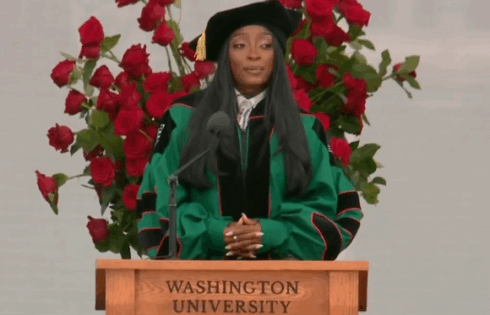Colgate University’s student population was 4.2 percent black in the 2013-2014 academic year.
Fifty percent of the alleged sexual violations reported to the central New York university that year were against black males. They were 40 percent of the students “formally adjudicated.”
In a three-year academic period from 2012 through 2015, black men were a quarter of sexual-misconduct reports, 21 percent of adjudications and 15 percent of those “found responsible.” (Asians make up 3 percent of Colgate, but Asian male figures are similarly skewed.)
We only know about these figures – which are never voluntarily disclosed by universities – because Colgate was investigated by the Department of Education’s Office for Civil Rights for “potential race discrimination” in Title IX proceedings, journalist Emily Yoffe writes in the third article in her three-part Atlantic series on campus rape policies.
The plausible racial discrimination in Title IX adjudications – particularly against foreign men of color – is the issue “nobody wants to talk about,” an Ivy League professor told Yoffe:
He said students are pushing their boundaries and that many hook up with a partner of a different ethnicity for the first time. But then, “if there is any kind of perceived injury—emotional or physical—when you cross racial lines, there’s likely to be more animus. It needs to be talked about and hasn’t been.”
The disproportionate rates of sexual-misconduct complaints against nonwhite college men is largely anecdotal, but it has been known for at least a few years, as Yoffe notes.
Harvard Law Prof. Janet Halley, a self-described feminist, wrote about the phenomenon in a 2015 Harvard Law Review article, and she included it in written testimony to the Senate Health, Education, Labor and Pensions Committee later that year. (Halley and her fellow feminist colleagues recently asked the Department of Education to protect due process for accused students.)
Yoffe herself says that when race is mentioned or alluded to in campus adjudications that make the news, it’s “illuminating”:
Usually the reports don’t disclose race, but sometimes it is mentioned, and if the accused is named, it’s often possible to determine his race through photo searches or other online information. Black men make up only about 6 percent of college undergraduates. They are vastly overrepresented in the cases I’ve tracked.
Several lawsuits against colleges by punished men of color cite alleged racial discrimination, and academics who have participated in campus disciplinary systems (including Halley) are alarmed by the racial dynamics.
One of them is a former Colgate professor, Melissa Kagle, who “became a prominent critic of Colgate’s handling of sexual misconduct” and was one of three people who filed the race-discrimination complaint against it:
Her co-complainants were minority students who’d been accused of assault or harassment, and to whom Kagle had become an informal adviser. … In several cases that she’d come to know closely, at first by happenstance and then because minority men began to seek her out for assistance, “people believed something terrible happened when it hadn’t.”
Kagle believes that men of color—and especially foreign men of color, students from Africa and Asia—were uniquely defenseless when charged with sexual assault, typically lacking financial resources, a network of support, and an understanding of their rights. … I spoke with two women who made harassment complaints against a Rwandan student who was later expelled. One said she hadn’t wanted to make a complaint, but was told that it would help another woman feel safer; neither believed expulsion was the right outcome.
Like The College Fix on Facebook / Follow us on Twitter




Add to the Discussion